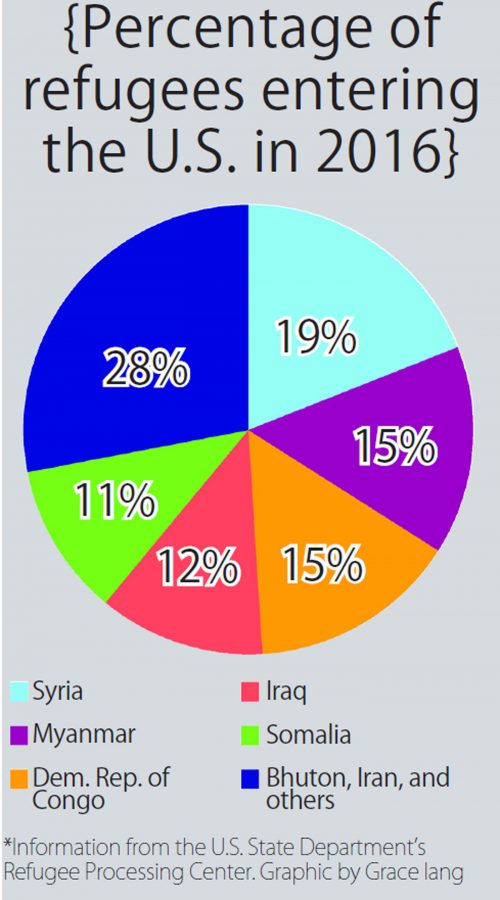Process for refugees changes over the years
March 15, 2017
Refugees may leave their country for completely different reasons, whether they are seeking for a better education system or freedom of religion.
There have been changes overtime for refugees in Malaysia, such as the amount of time it takes to get a United Nations (UN) identification and the education system. Because of this, the process of coming to the U.S. is very different for sophomore Gracy Hmung and freshman Van Lawm Lian, both from Myanmar.
When the refugees are fleeing from their native country, their acts are considered illegal. Once they get to Malaysia, the refugees can apply for a UN, which makes their travel to the United States legal.
Hmung journeyed to Malaysia at only 6 years old from Myanmar. It only took her and her family a year to get from Malaysia to the U.S., so she believes that the process was faster in the past.
“They (the UN) would always give us an appointment, and we didn’t have to wait a long time for our next appointment like today,” Hmung said,. “Now, many families have to wait as long as a month or more for their next appointment, and it takes them longer to come to the United States.”
For Lian, it took him more than four years to get his refugee process completed. Lian began his journey when he was 11 years old and arrived to the U.S. in 2016.
According to Hmung, the reason why it’s becoming more difficult to be approved by the UN is because governments are closing the border, however it’s different for each families.
According to newcomer teacher Marsha Manning, since the mid 2000s, the amount of countries where refugees are coming from has increased tremendously. Manning now has students from Syria, Congo, Honduras, as well as Myanmar.
Another difference among new versus old refugees is the knowledge that the students come to the United States with. For the refugee students coming from Malaysia, the education system is now mostly taught in a language they can comprehend, which is an improvement from years past. However, for other countries, it’s different because they have not gone to school.
“The kids we’re getting now have only lived in refugee camps for their whole lives,” Manning said,. “They don’t really have any experience in their native country, haven’t been in school in an organized, academic setting.”
Since the refugees have never been in a proper school setting, students have no prior knowledge of education. Many students cannot be taught starting at their basic grade levels.
“So when they come here, a lot of the things that we do at grade level, especially at 9th grade, even at a basic level, (the students) don’t have any background knowledge,” Manning said.



